Lima Overview
Lima, named the "City of the Kings" by the Spanish Conquistadores, is the main gateway into Peru and the country's capital city. Founded by Spanish Conquistador Francisco Pizarro in 1535, the city's first inhabitants numbered less than 100. Pizarro originally made his capital at Jauja, in the Andes. The change to Lima was a strategic one caused by the need to be close to his ships.
Although Lima's beginnings were modest, it continued to grow and became the political and commercial capital of Spanish South America. By 1610, the population was 26,000, of whom 10,000 were Spaniards. This was Lima's great period of wealth and few cities in the Old World could rival Lima, until the terrible earthquake of 1746. The city was reduced to rubble and an estimated 4,000 were killed. Despite efforts to rebuild the city, Lima never recovered her former glory.
In modern Lima many of the businesses and hotels have moved to the fashionable seaside suburbs of Miraflores and San Isidro. However, many of Lima's sites of interest are to be visited in central Lima including the great Plaza de Armas, Government Palace and the Cathedral.
The Temple of Pachacamac is a monument to Peru's pre-Inca and Inca history. These pre-Columbian ruins survive in Lima as testimony that the area was populated before the Conquest. The rich, religious Lima of the Spanish colonies is seen in the churches and convents of the city, including the Santo Domingo Convent, the San Francisco Church and the capital's Cathedral.
Lima Attractions
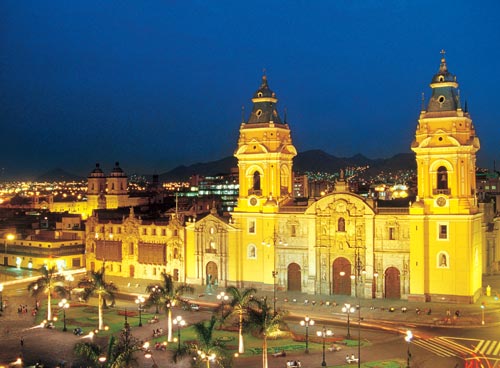
Plaza de Armas, Central Lima This is the spot where Francisco Pizarro founded the city in 1535. The north side is dominated by the Government Palace (rebuilt in 1937), home of Peru's president. You can watch the changing of the guard here at 11:45 each morning.
On the east side of the Plaza you'll find the Cathedral. Construction of this church began in 1564 and was completed in 1622. Unfortunately is was reduced to rubble in 1746 by an earthquake and was subsequently rebuilt and completed by 1755. The supposed remains of Francisco Pizarro lie in a small chapel, the first on the right of the entrance, in a glass coffin.
Open Tues-Sun 10:00 - 18:00, Entrance fee of US$2 includes entrance to the Religious Art Museum inside.
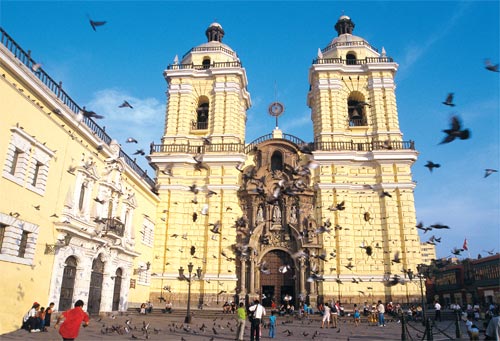
Church and Convent of San Francisco Corner of Lampa and Ancash (5 minute walk from the Plaza de Armas). Admission includes a 1-hour guided tour, tours in English depart every hour. Open everyday 09:30-17:00, Entrance fee 6 Soles (about USD$2)
This Franciscan monastery and church is one of Lima's most spectacular buildings dating from the colonial era. It was consecrated in 1673 and one of Lima's few large buildings to survive the earthquakes of 1687 and 1746. Much of the building has been strikingly restored in its original yellow-and-white baroque style. Although it is a pretty building the main attraction is the catacombs. As many as 75,000 bodies were interred here before Lima's main cemetery was built. Visitors can file past the bone-filled crypts (not for the faint-hearted). The monastery also houses a fascinating 17th century library containing many thousands of antique texts, some dating back to the Spanish conquest and the first years after Lima's foundation.
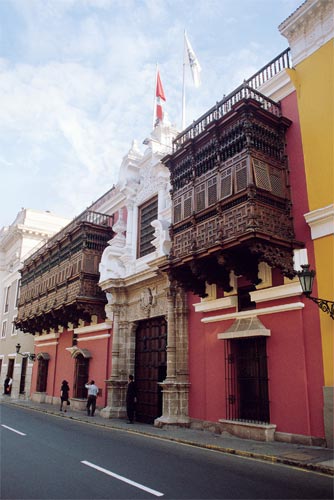
Torre Tagle Palace Jr. Ucayali 363, Central Lima (a couple of blocks to the east of the main Plaza de Armas) Open Mon-Fri 9am-5pm, Free (access to the inner courtyard is not reliable)
This superb, beautifully maintained mansion is the best surviving example of colonial architecture in Lima. It was built in 1735 by a marques who was a treasurer for the Royal Spanish Fleet. The building is now occupied by the Foreign Ministry which explains the numerous security forces with machine guns on the roof! Unfortunately access is restricted to the inner courtyard. However it's still worth a visit even if it's only from outside in the street. It has a lovely facade with a beautiful baroque stone doorway between two strikingly carved dark-wood balconies.
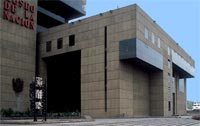
Museo de la Nacion Avenida Javier Prado Este 2465, San Borja. Open Tues-Fri 09:00 - 18:00. Sat-Sun 10:00 - 18:00. Entrance fee 9 Soles (about US$3)
From the outside this museum looks like a large, ugly concrete monstrosity situated next to a busy main road. However, on the inside, Lima's National Museum is well laid out and very informative and is well worth a visit. If you only have time to visit just one museum in Lima then this should be your first choice even if it is located a little bit outside the city centre (take a taxi there, it's much safer than taking a bus). The numerous exhibits guide visitors through the highlights of the Pre-Conquest cultures (before the Spanish arrived). The exhibits are housed in vast salons spread over 3 floors and are ordered chronologically which is very helpful for getting to grips with the many cultures dispersed across Peru. A visit to the museum is recommended before you go to see the archaeological sites themselves. Displays are well labelled in both Spanish and English and include scale models of many of the Inca sights around Cusco as well as from the north of Peru such as the tomb of the Senor de Sipan, artefacts from Batan Grande (near Chiclayo), reconstructions of the friezes found at Huaca La Luna and Huaca El Brujo (near Trujillo) and other important sites. There is also a comprehensive range of traditional costumes from around the country and miniature models depicting life in pre-Conquest times as well as a good collection of ceramics and mummies.
 | 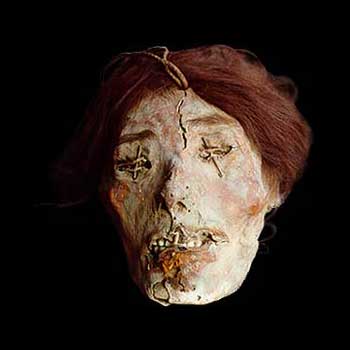 |
|---|---|
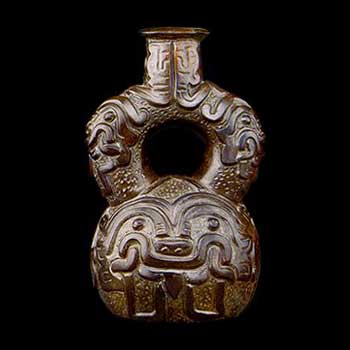 | 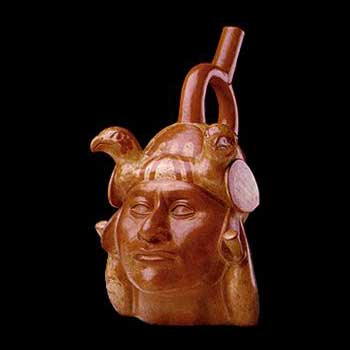 |
 | 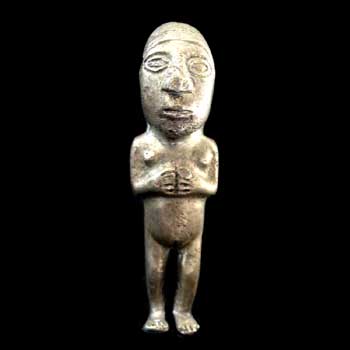 |
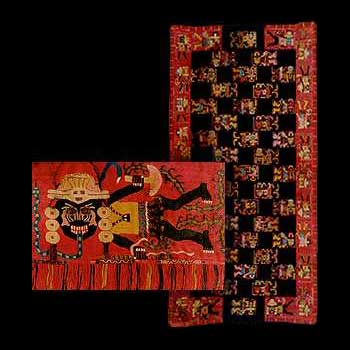 |  |
Museo Larco (Museo Arqueologico Rafael Larco Herrera) Avenida Bolivar 1515, Pueblo Libre. Open daily 09:00-18:00 Entrance fee 20 Soles (about US$6)
This museum has the largest private collection of pre-Columbian ceramics in the world. It was founded in 1926 and is housed in an 18th century colonial mansion which itself was built upon a 7th century pre-Columbian pyramid. The museum mainly concentrates on items from the Moche Dynasty (A.D 200-700) who lived along the northern coast in an area near to present day Trujillo.
The museum is divided into 3 sections: the main museum, the warehouse museum (kind of an overflow) and most intriguingly, the erotic art museum or "Sala Erotica". The Moche depicted sexual acts in realist, explicit and often humorous terms. Well worth a look!! The main museum houses a Gold and Silver of Ancient Peru exhibition, a magnificent textile collection as well and many thousands of examples of pottery. Examples of the current exhibits and information about the museum can be found on their website
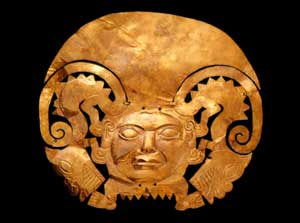 | 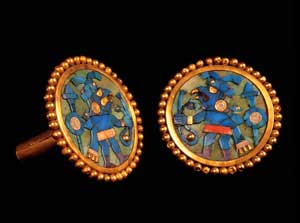 |
|---|---|
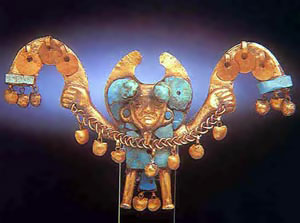 | 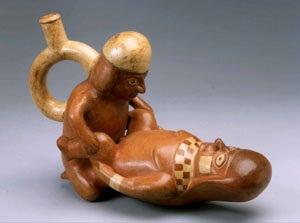 |
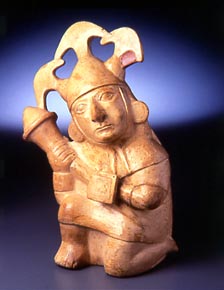 | 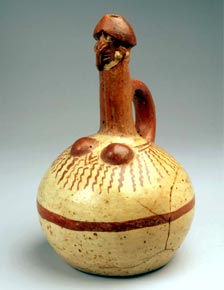 |
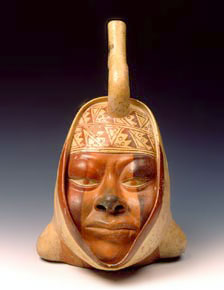 | 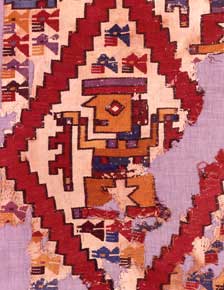 |
Museo Nacional de Arqueologia, Antropologia e Historia del Peru (National Archaeology and Anthropology Museum) Plaza Bolivar, Pueblo Libre. Open Mon-Sat 09:00 - 18:00, Sun 10:00 - 17:00. Entrance fee about US$3.
Houses one of the largest collections of artifacts from pre-Hispanic cultures in Peru, although it has lost some of its best pieces to the Museo de la Nacion recently. This museum was once a stately colonial mansion that was the home of the leaders of the struggle for independence, Jose de San Martin and Simon Bolivar. Exhibits include the Tello Obelisk and Estela de Raymondi from the site of Chavin de Huantar. Examples of the current exhibits and information about the museum can be found on their website.
Mercado Indio Indian Market located between 6th and 10th blocks of Avenida La Marina, Pueblo Libre. If you've forgotten to buy everyone at home a present after visiting Peru then this maybe your last opportunity to do so. This large collection of market stalls sell crafts only, including woollen and alpaca clothing, carved wood objects and jewellery. There's a huge selection and bargaining is expected although the prices in other parts of Peru are cheaper. Don't take any valuables with you as there are always thieves about. The handicrafts markets in Miraflores on Avenida Petit Thouars (blocks 51-54) has a similar, although slightly more expensive, selection.
Pachacamac. 30 kilometres to the south of Lima (45 minutes by taxi), the ancient shrine and oracle of Pachacamac was the principal ceremonial centre on the Peruvian coast from before Inca times. Pachacamac was believed to be the creator of the universe and a divinity adored by old Andean civilizations. A sacred and ceremonial site dates back to the beginnings of Christianity where thousands of pilgrims converged to pay tribute and consult the Pachacamac oracle, who they believed could see the past, the future and people’s fate. After the Incas conquered this area, they built a temple to the sun over the old oracle of Pachacamac, strategically located facing the sea. At the site museum there is an idol of the deity, Pachacamac, which couldn’t be seen by the profane, and was reserved for the high priests who kept, revered and interpreted the divine oracle in the old times. A sacred site, the temple was considered to be part of the planet’s mystical axis.